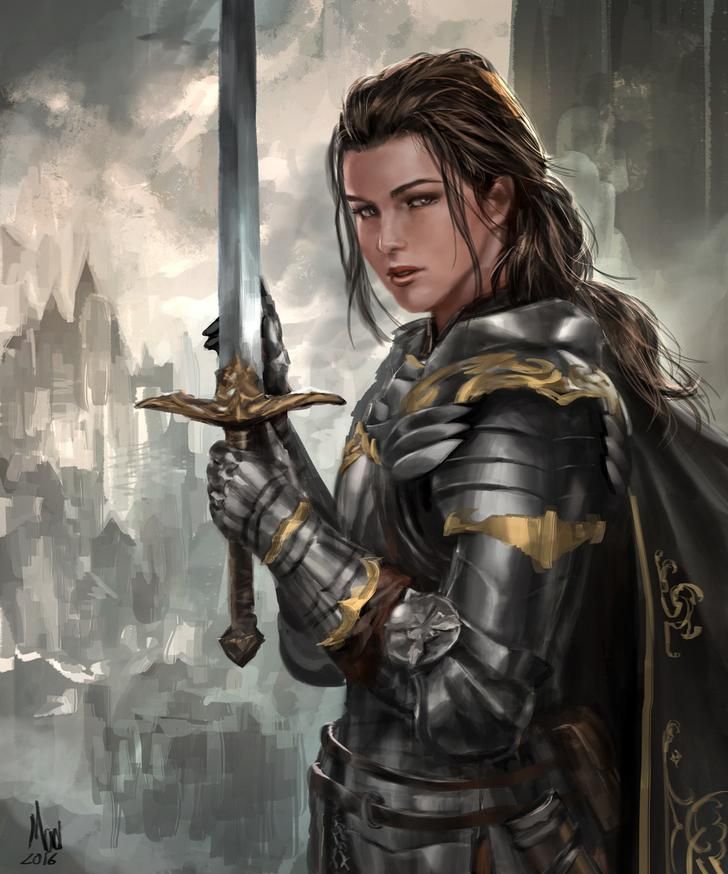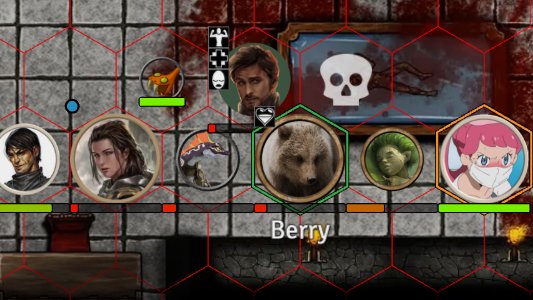(This started as a repost of a few bullet points about PF2e mechanics that I wrote on Facebook. Then it turned into a novel. Why am I like this?)
After I wrote my what I’m looking for in my next campaign post, I decided to apply to a Pathfinder 2e game that was advertising on /r/lfg. I was interested in giving PF2e a try, because I was getting mighty sick of Wizards of the Coast’s continual missteps on issues of inclusion and representation in D&D. I had heard that Paizo Games — the makers of Pathfinder, another fantasy RPG — were better in this regard.
… I made some errors in judgment while lurking on /r/lfg, but joining this game was not one of them!
Wtf is Pathfinder, anyway?
For context, we need to go back to D&D 3.5e, and its Open Gaming License, which allowed other creators to piggyback on its rules system to build their own games. Many creators did this, and I had some experience with them — I played a lot of Crafty Games’ Spycraft and FantasyCraft, in particular.
Paizo Games, and Pathfinder 1e, came out of this. Originally the creators of Pathfinder were working directly with WotC, until WotC screwed them over in some way, so they went off and formed Paizo. (A fellow player provided this much better article as a detailed explanation).

The world of Golarion also came out of this — presumably because they could no longer use any of the brand-identifying D&D settings.
I never played PF1e, so I can’t say much about it. But from what I understand, it was incredibly similar to D&D 3.5 — so much so that people called it “D&D 3.75.”
Then came Pathfinder 2e in 2019 — arguably in response to the incredible popularity of D&D 5e. More importantly, PF2e refined many of the systems from PF1e, doing away with some of the more annoying aspects of D&D 3.5.
Given that, I initially expected a game that was more like D&D 5e. But PF2e is definitely its own unique system, and still feels more like 3.5 than it does 5.
The Campaign
I joined a game with a bunch of pretty woke players, playing Agents of Edgewatch, a pre-written Adventure Path designed to take your character from level 1 to 20.
This was not a neutral choice, it turned out, but it would turn into a good example of Paizo’s relatively strong voice for DEI in the games industry.
In AoE, you play fantasy guards at a fantasy world’s fair. I suspect Paizo was going for a buddy cop movie/Brooklyn 99/Discworld Guards sorta feel, but the book had the misfortune of being released in July 2020.
… you know, the month George Floyd was murdered and protests against police violence erupted across the U.S.
That definitely gave me pause, but this was the first test, for me, of how Paizo would handle such an issue. In this regard, I was generally pleased. Apparently the publisher, Erik Mona, issued a public apology for the insensitivity that implied, and options were added to play as adventurers looking for work, or to make all damage non-lethal without the usual mechanical penalty.
(Btw, I came to all this after the fact — Paizo/Pathfinder wasn’t really on my radar in 2020. But this was on my mind as the group deliberated what to play, and this is what I learned as I investigated).
My group chose this adventure rather than the other AP that was offered, Extinction Curse. I can’t speak to how my fellow players made their decision, but mine was informed by my Pathfinder-playing friends, who judged it as the better written of the two APs. Forging forward with that decision, we opted for the “assume non-lethal damage” option, but we still decided to go with the fantasy cop angle.
So far I don’t feel like anyone’s abused it, although I am still bothered by the fact that — since you’re not exactly dungeon-delving in this game — all your cool stuff comes, basically, from civil asset forfeiture. That’s definitely kinda YIKES in my book. But when you’re taking stuff from a half-elf you find up to his elbows in flayed humanoid skin, it feels a lot less awful.
(We still feel bad about accidentally killing Rusty the Rust Monster, though).
Currently we are level 4, and have just defeated the villain of book 1.
My character
I’d wanting to play a paladin in D&D for a long time. In Out of the Abyss, I watched my fellow player Justin have a helluva good time with his dragonborn Oath of Devotion paladin Gaulir. I found myself saying, “Yeah I want to smite things, too!”
Also, you may recall I’m a big fan of this fic, where the original female main character is a paladin of Kelemvor (a newer god of death who arose out of the Time of Troubles) who once served Torm (god of duty, loyalty, righteousness, and law).
The PF2e equivalent of a paladin is champion. (“Paladin” is specifically the lawful good subclass of champion). Additionally, in PF2e, what god you are a champion of is actually important — in 5e it feels more like flavor text. So I knew what god I picked to be a champion of was really going to matter.
The (very) rough equivalents of Kelemvor and Torm in the world of Golarion are Pharasma and Iomedae, both goddesses. I decided my character — who I named Kivran — was going to be a redeemer (NG) champion of Iomedae, who was beginning to have doubts about the righteousness of her path. She had looked at how the divine right of kings was used as a bludgeon against the less fortunate, and begun to ask herself, “What is honorable in the face of suffering and death?”
Mechanically speaking, I ended up taking the Godless Graycloak background which… might not have been the best choice? It’s literally the atheist/non-religious faction of the Absalom guard. But I saw it as reactionary to corruption Kivran saw in the temple of Iomedae.
To summarize: she had lost faith in the clergy of Iomedae, but not the goddess herself.
I also gave her a family history where she was an only child, and her mother was an adventurer and a paladin of Iomedae. Thus she had been raised with the expectation that she would become a champion of Iomedae, too, and felt some pressure to join the temple before she was 100% ready.
I saw her trajectory as a character as moving from being a champion of Iomedae to a champion of Pharasma, but it turns out mechanically speaking, that’s kinda hard to do in PF2e!
One of my fellow players pointed out that I could use the Splinter Faith class feat to do this, but a) it doesn’t seem that mechanically useful; it just gives you access to a different set of focus spells, which are super limited, anyway. Point B) there’s actually not that much of a splinter between Pharasma and Iomedae. As my GM put it:
Iomedae: be valorious! do good! smite evil!
pharasma: oh, and to undead, too!
iomedae: yeah, what she said!
That said, the GM has been very accommodating, playing up or modifying aspects of the adventure to show Kivran’s growing interest in Pharasma and sorrow for the fate of those who become undead; he even wrote up a ritual of rest that Kivran has taken to using after destroying any undead. I also took the Shining Oath feat at level 3 to further expand this angle of her character.
L0ng story story, I’m still figuring out how to express this inner tension mechanically. My current leaning is to pick up the cleric archetype for Pharasma, but we’ll see.
Anyway, this is the random piece of fantasy art I picked to represent Kivran. Turns out the options when you search “female paladin fantasy art” are kind of awful.

Kivran is a human of Taldan heritage, so I needed to pick an appropriate last name for her, too. It seems like a lot of the Taldan names are Latinate in nature, so of course the first thing that came to mind for me was the Roman general Lucius Cornelius Sulla, possibly because I’ve listened to a lot of Hardcore History.
Hence: Kivran Sulla, native of Absalom, only child of two adventurers, troubled champion of Iomedae, former Graycloak, newly a devotee of Pharasma.
… also, thanks to a combination of factors, the party’s mom. (Glimpse of Redemption reaction, an undercover operation where I had to pretend to be the druid’s mom, said druid yelling “Moooooooom!” whenever she took crit damage and wanted me to use said reaction, and dubbing of said ability as Mom Glare).
The rest of the party
We started out as a group of four, but one player stepped away after a couple of months, and two more players joined — including my husband Matt.
The other two original characters were:
- Nathraak, human wizard from the bad part of town (the Puddles). He has a history where he got arrested for practicing unlicensed medicine, which got him interested in law, which eventually led to him becoming part of the guard corps for the Puddles. (And, eventually, the Edgewatch). One thing I think is super interesting about Nath, mechanically, is that he really doesn’t cast a lot of spells. He seems to be built to do two things: counter spells, and heal with the Medicine skill rather than magic. Occasionally he also yeets his staff.
- Shep, the leshy druid, and her bear companion Berry. She likes to remind us that the Starstone Isle is not entirely the city of Absalom and does in fact have wilderness. She also pretends to be offended by jokes about leshy, casts Electric Arc a lot, and once disguised herself as a human child and pretended to be Kivran and Nath’s kid.
About a month ago we were joined by:
- Jabi, kobold alchemist, who we met when undercover in a sketchy club. Very nervous and generally high on some kind of mutagen. He also comes with his pal Rope Snake, who I’m still not sure is a real snake or some kind of construct.
- Lucio Merenas, another Taldan human and swashbuckler from a family down on its luck. This is Matt’s character.
(I feel kind of bad for Matt, because he joined the campaign right before we fought two big bad humanoid enemies. Thus the story of his game thus far has been failing to Tumble Through the squares of enemies with ridiculously high save DCs. I think he’s still having fun? But that’s at least part the awesomeness of the group itself).
I like the style of play in this group. It scratches my itch for both roleplay and tactical combat, for sure. It’s also a good level of seriousness for me — people clearly care about the adventure and their role in it, and they’re minimally distracted during game (I’m probably the worst about distraction, especially since it’s Thursday night right around when my ADHD meds start to wear off…) But no one is playing an edgelord character, either, and we often fill Discord with memes and gifs OOC.
On the whole, I feel like I got what I was looking for in my original post!
And finally, what I came here to say…
Mechanically, I have some Thoughts about how this plays as an RPG system, having played for a few months now:
- Most important: I’m having a lot of fun.
- It is WAY crunchier a system than I was expecting. There’s a reason they call it Mathfinder.
- At the same time, that crunchiness brings a lot of options, allowing you to build the sorts of characters that would be impossible in 5e.
- Yes, yes, rules-light systems exist, but sometimes what you want is to roll high numbers and feel like a fantasy badass.
- That said, you don’t roll a lot of high numbers at lower levels, it seems. It’s hard to feel effective when you’re level 4 and you absolutely cannot hit a target to save your life.
- You do feel pretty badass, though, when Shield Block saves you from eating an owlbear’s crit at level 1.
- That’s another thing — you really feel like a whole character starting at level 1. One of my least favorite things about 5e is that you don’t really gain class identity until you pick your subclass, which for quite a few isn’t until level 3. In PF, you get it right at level 1. It wasn’t like Kivran had to do a rotation to decide what sort of champion she wanted to be.
- PF2e has moved on a lot from its origins in D&D3.5, but one thing that remains: you have to min-max to some extent or you will have a bad time.
- … why yes, I AM still traumatized by memories of the miserable 3.5 campaign I was in, where I spent most of my time stuck in melee range as a half-orc archery ranger constantly failing Will saves.
- Luckily, I do enjoy min-maxing to some degree, and more importantly I know a fair number of people — both in my game and out — who are happy to provide guidance. Also this PF2e champion class guide helps.
- I feel like the classes are pretty well balanced, at least across a representative sample of enemies. There are definitely fights where I feel more effective than others — and I’m sure, given their relative strengths and weaknesses, Nath and Matt feel the same way — but I also don’t look at the druid or wizard and be like, “okay, I will never be that effective.” CoDzilla, it is not.
- Everything is a feat. And you get a LOT of them — even without variant rules, you get something like 11 class feats alone by the time you get to level 20. (Not counting skill feats, general feats, archetype feats, etc). I had to create my own cheatsheet just to keep track at a high level of everything my feats allow me to do. And this is level 4 — I imagine it will only get worse as we get higher level.
- Each feat alone is generally a pretty small or niche benefit. It feels weird to take a feet that, say makes you better at climbing, but when you get so many of them…
- Feats build on each other and combine in interesting ways.
- There seem to be fewer feats that are outright traps in PF2e compared to 3.5. (Although one could argue that the Group feats are, at least in this campaign, where our GM never bothers with the rule that Diplomacy/Intimidate/etc can only be used against one target at a time. Why yes I’m still annoyed I spent points on Group Impression).
- This is a system where it REALLY helps to plan out your character to level 20 in advance, since there is a lot of “how many class feats will I have by X level, and how does that affect what feats I take now, or what prerequisite feats I take?”
- Relatedly, my kingdom for the free archetype variant rule to be included in the web version of Pathbuilder!
- I like the three-action system a lot; it gives a lot of flexibility that you just didn’t have with 3.5’s “move and two actions and also you get a five-foot-step” system. I can move twice and raise my shield! I can attack three times!(admittedly with an increasing penalty after the first attack)
- While ranged attacks in melee range still provoke attacks of opportunity (*shudder* *flashes back*) I enjoy that attacks of opportunity aren’t something anybody can do. Generally only fighter or champion PCs can get them, and in monsters, you can usually guess by what sort of creature it is.
- For all that it is a crunchy system, combat doesn’t bog down or interfere with RP the way I remember it doing in 3.5. Maybe it’s the campaign level; maybe it’s that my fellow players seem to actually, yanno, plan out what they’re going to do when it’s not their turn. Anyway, it’ll be interesting to see how it works out at higher levels, when we all have more feats.
In conclusion
This has been a really long way of saying:
I’m liking Pathfinder. It’s different, but in good ways. I really like my character and I feel invested in her success. I like my fellow players and I like the style of play. I like options that aren’t continuing to give Wizards of the Coast money as they continue to do shitty things.
I still wish Pathbuilder worked for me, though.
That’s all, folks! Tell me about your own Pathfinder experiences, and revel in telling me where I’m wrong.
